1/ IV 2022Review: Voyager: Photographs from Humanity’s Greatest Journeyby Jeff Foust Monday, April 4, 2022
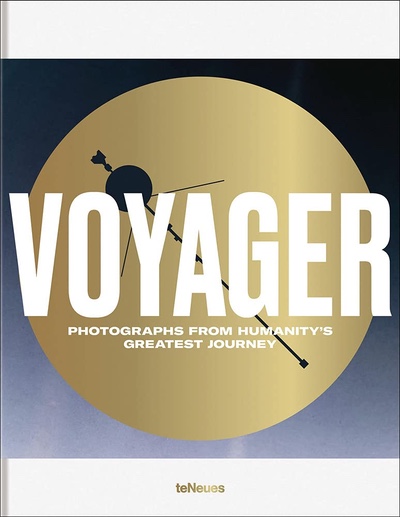 Voyager: Photographs from Humanity’s Greatest Journey
Voyager: Photographs from Humanity’s Greatest Journeyby Jens Bezemer, Joel Meter, Simon Phillipson, Delano Steenmeijer, and Ted Stryk
teNeues, 2020
hardcover, 304 pp., illus.
ISBN 978-3-96171-291-5
US$65.00
https://www.amazon.com/exec/obidos/ASIN/3961712913/spaceviewsThe new documentary It’s Quieter in the Twilight examines the Voyager missions as they approach their end, tended to by a small group of employees, some of whom have been working on the spacecraft for decades. At this point, the mission is almost forgotten, and when most of the documentary was filmed in 2019 and 2020, the Voyager team was exiled to an office building off the campus from the Jet Propulsion Laboratory (see “Reviews: Space films at SXSW”, The Space Review, March 21, 2022).
https://www.thespacereview.com/article/4358/1Effective altruism, corporate responsibility, and space sustainabilityby Layla Martin Monday, April 4, 2022
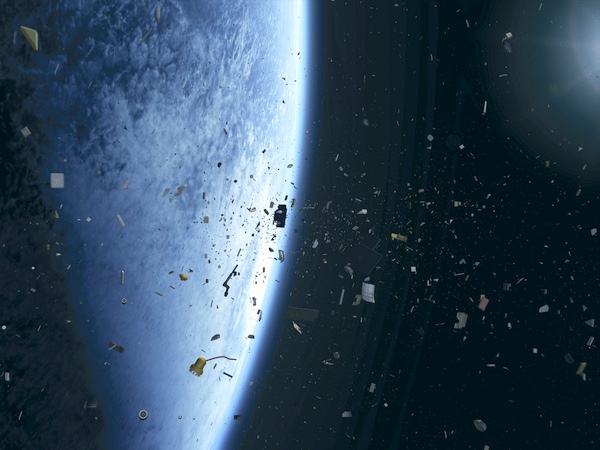 Effective space sustainability requires thinking differently from the approaches that led to the climate crisis. (credit: ESA/Spacejunk3D, LLC)
Effective space sustainability requires thinking differently from the approaches that led to the climate crisis. (credit: ESA/Spacejunk3D, LLC)The maxim, or general rule, is that we pick and choose which ethical rules to follow. Culture, religion, law, and the desire to stay out of prison, inform our preferences. While I may want to get into trouble at an epic party in Phuket, steering clear of the Bangkok Hilton overrides my fleeting preference to test the effectiveness of Thai law enforcement.
https://www.thespacereview.com/article/4359/1Keep space dialogue going, astronautics federation saysby Philippe Cosyn Monday, April 4, 2022
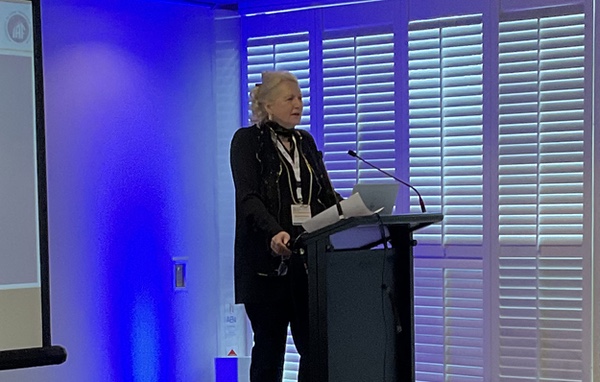 IAF President Pascale Ehrenfreund said that despite the “current tragedy unfolding in Ukraine” she hopes the organization could continue to be a forum for space cooperation. (credit: IAF)
IAF President Pascale Ehrenfreund said that despite the “current tragedy unfolding in Ukraine” she hopes the organization could continue to be a forum for space cooperation. (credit: IAF)At the 70th anniversary celebration of the International Astronautical Federation (IAF), held in Paris March 26, leaders of the world’s foremost space organizations called for a “continued dialogue” among the world’s space actors in the wake of the “tragic events unfolding in Ukraine.”
https://www.thespacereview.com/article/4360/1Space travelers by any other nameby Jeff Foust Monday, April 4, 2022
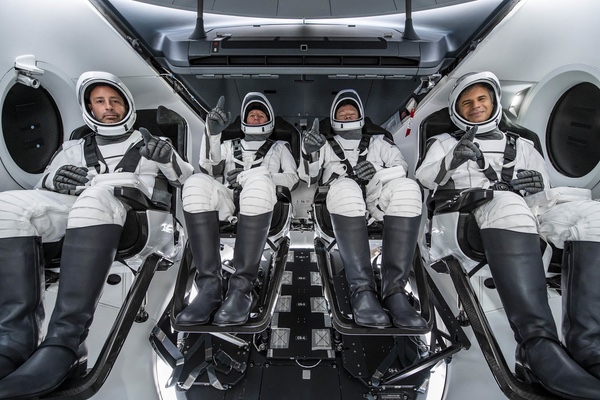 The Ax-1 crew of (from left) Mark Pathy, Larry Connor, Michael López-Alegría, and Eytan Stibbe. Connor says he consideres his crew private astronauts, a distinction separate from suborbital space tourists. (credit: Axiom Space)
The Ax-1 crew of (from left) Mark Pathy, Larry Connor, Michael López-Alegría, and Eytan Stibbe. Connor says he consideres his crew private astronauts, a distinction separate from suborbital space tourists. (credit: Axiom Space)The space industry has struggled to come up with a common term for people who fly to space on commercial vehicles who are not part of the flight crew. There’s space tourists, private astronauts, and spaceflight participants, the last option having the advantage of being the term used in federal law and regulations (but the disadvantage that is sounds, well, bureaucratic.)
https://www.thespacereview.com/article/4361/1Dark clouds: The secret meteorological satellite program (part 2)The Radio Corporation of America and the Army’s reconnaissance satelliteby Dwayne Day Monday, April 4, 2022
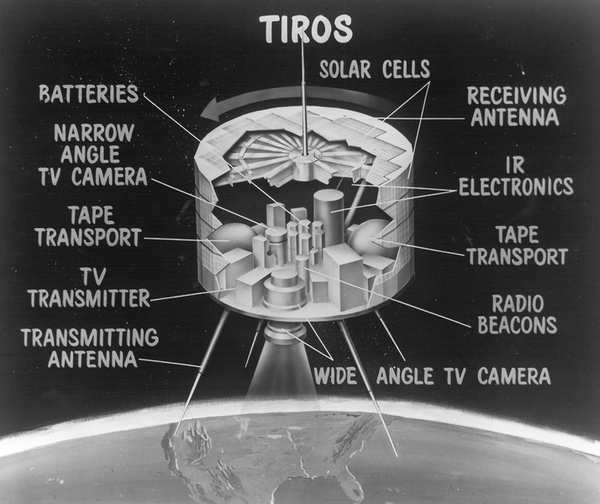 The Tiros weather satellite evolved from a rejected proposal by the Radio Corporation of America to the Air Force for a reconnaissance satellite. RCA pitched the idea to the Army, which was not allowed to develop a reconnaissance satellite and instead decided to develop a weather satellite. Tiros was transferred to NASA in 1958 and launched in 1960. (credit: NASA)
The Tiros weather satellite evolved from a rejected proposal by the Radio Corporation of America to the Air Force for a reconnaissance satellite. RCA pitched the idea to the Army, which was not allowed to develop a reconnaissance satellite and instead decided to develop a weather satellite. Tiros was transferred to NASA in 1958 and launched in 1960. (credit: NASA)In late 1955, following the RAND Corporation’s Feed Back report, the US Air Force conducted a competition to select a contractor to build a television-based reconnaissance satellite. Three companies submitted proposals: Lockheed Aircraft, the Radio Corporation of America, and the Glenn L. Martin Company. Air Force officials considered the Martin proposal to be poor. The Air Force officers evaluating the other two proposals considered both of them to be impressive. Indeed, some felt that technically, the RCA proposal was the better of the two. But according to one participant, RCA’s presentation of its proposal was a disaster: the person who delivered it was unprepared and nobody from RCA’s senior management was there to state that the company valued such a relatively small contract.[1]
https://www.thespacereview.com/article/4362/12/ IV 2022Review: NASA Missions to Marsby Jeff Foust Monday, April 11, 2022
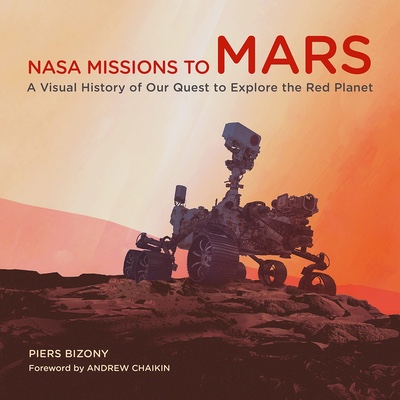 NASA Missions to Mars: A Visual History of Our Quest to Explore the Red Planet
NASA Missions to Mars: A Visual History of Our Quest to Explore the Red Planetby Piers Bizony
Motorbooks, 2022
hardcover, 196 pp., illus.
ISBN 978-0-7603-7314-9
US$50
https://www.amazon.com/exec/obidos/ASIN/0760373140/spaceviewsAs NASA publicizes milestones in its Artemis program to return humans to the Moon—the rollout and testing of the Space Launch System rocket ahead of its first launch, an upcoming competition to select a second company to develop a crewed lunar lander—agency officials emphasize their long-term goal remains on Mars.
https://www.thespacereview.com/article/4363/1Review: Return to Spaceby Jeff Foust Monday, April 11, 2022
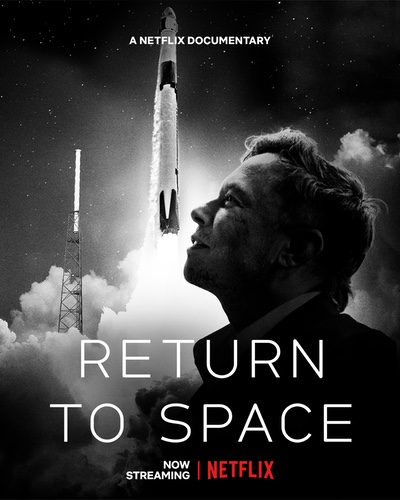
Return to Space
directed by Jimmy Chin and Elizabeth Chai Vasarhelyi
128 minutes, rated TV-MA
streaming on Netflix
https://www.netflix.com/pl/title/81111324Last Friday, a Falcon 9 lifted off from the Kennedy Space Center and placed into orbit a Crew Dragon spacecraft called Endeavour. The spacecraft docked to the International Space Station less than 24 hours later, delivering four private astronauts on the Ax-1 mission for Axiom Space. Shortly after Endeavour returns from its ten-day mission, another Crew Dragon, named Freedom, will launch on the Crew-4 mission for NASA, delivering American and European astronauts for a five-month stay.
https://www.thespacereview.com/article/4364/1What is China doing at the lunar distant retrograde orbit?by Kristin Burke Monday, April 11, 2022
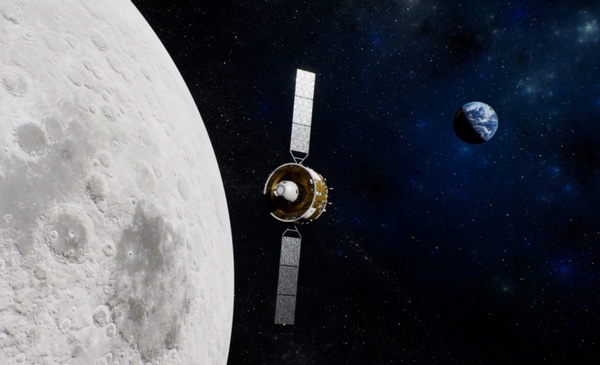 An illustration of the Chang’e-5 orbiter and sample return capsule hearing back to Earth from the Moon in 2020. The orbiter is now in a distant retrograde orbit around the Moon, perhaps to prepare for the next phase of China’s lunar exploration plans. (credit: CNSA)
An illustration of the Chang’e-5 orbiter and sample return capsule hearing back to Earth from the Moon in 2020. The orbiter is now in a distant retrograde orbit around the Moon, perhaps to prepare for the next phase of China’s lunar exploration plans. (credit: CNSA)China’s Chang’e 5 (CE-5) orbiter, which as of January 2022 has likely moved to the lunar distant retrograde orbit (DRO), is probably conducting enabling telemetry, tracking and control and Very Long Baseline Interferometry (VLBI) tests to support Chinese preparations for the next stage of China’s Lunar Exploration Program (CLEP), according to Chinese government information and Chinese academics.
https://www.thespacereview.com/article/4365/1Red and black: The secretive National Reconnaissance Office finally faces the budgeteersby Dwayne Day Monday, April 11, 2022
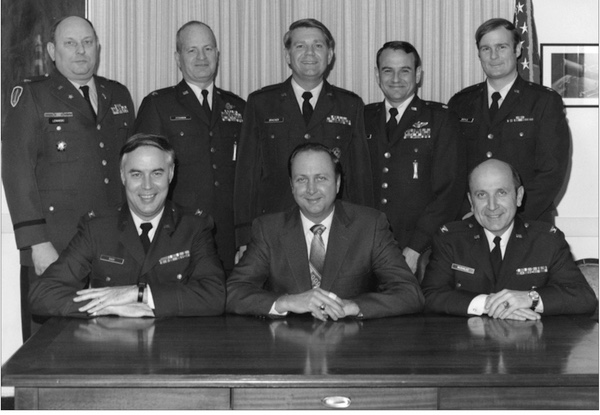 Jimmie Hill, front center, was the Deputy Director of the National Reconnaissance Office from 1982 to 1996. A few months before assuming that position, he gave a classified and very candid interview where he discussed his relationship with the Office of Management and Budget and increased oversight of the NRO. Here Hill is accompanied by members of the NRO Staff, which oversaw the secret organization's operations in the Pentagon. Hill was not a fan of the OMB. (credit: NRO)
Jimmie Hill, front center, was the Deputy Director of the National Reconnaissance Office from 1982 to 1996. A few months before assuming that position, he gave a classified and very candid interview where he discussed his relationship with the Office of Management and Budget and increased oversight of the NRO. Here Hill is accompanied by members of the NRO Staff, which oversaw the secret organization's operations in the Pentagon. Hill was not a fan of the OMB. (credit: NRO)When it was created in the early 1960s, the National Reconnaissance Office was so secretive that even its name was classified. There was no nameplate on its door in the Pentagon, and those who worked for it would never mention the acronym “NRO” outside of secure rooms that had been swept for eavesdropping devices.
https://www.thespacereview.com/article/4366/1A megaconstellation megadealby Jeff Foust Monday, April 11, 2022
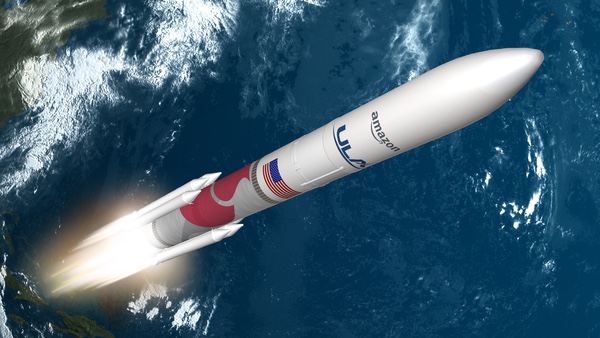 The Amazon deal includes 38 launches of Vulcan Centaur rockets, more than all the previous orders for the vehicle combined. (credit: ULA)
The Amazon deal includes 38 launches of Vulcan Centaur rockets, more than all the previous orders for the vehicle combined. (credit: ULA)Megaconstellations need mega rockets. Or, rather, mega amounts of rockets.
Last week, Amazon outlined its launch plans for a broadband constellation called Project Kuiper. The company received an FCC license in July 2020 for the system, which will place 3,236 satellites into low Earth orbit.
https://www.thespacereview.com/article/4367/13/ IV 2022Review: Never Panic Earlyby Jeff Foust Monday, April 18, 2022
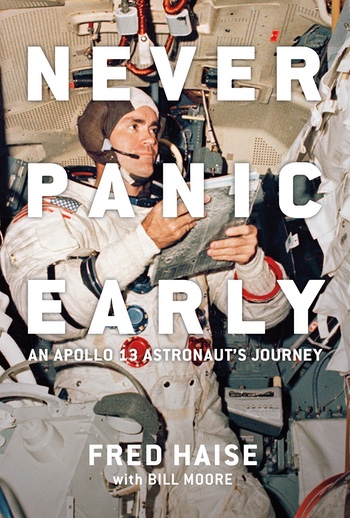 Never Panic Early: An Apollo 13 Astronaut’s Journey
Never Panic Early: An Apollo 13 Astronaut’s Journeyby Fred Haise with Bill Moore
Smithsonian Books, 2022
hardcover, 216pp., illus.
ISBN 978-1-58834-713-8
US$29.95
https://www.amazon.com/exec/obidos/ASIN/1588347133/spaceviewsFifty-two years ago yesterday, Apollo 13 splashed down in the Pacific Ocean, safely returning three astronauts after an explosion on their way to the Moon crippled their spacecraft and put their lives in jeopardy. The story of the mission has been told many times, as well as the life of its commander, Jim Lovell. The mission’s command module pilot, Jack Swigert, died of cancer in 1982 before he could tell his life story. One would think surely that the mission’s lunar module pilot, Fred Haise, alive and well today at age 88, would have written about his life, like so many other astronauts.
https://www.thespacereview.com/article/4368/1How solar storms can destroy satellites with easeby Piyush Mehta Monday, April 18, 2022
 A Solar Dynamics Observatory (SDO) image of the Sun showing an active region near the limb. (credit: NASA/SDO and the AIA, EVE, and HMI science teams)
A Solar Dynamics Observatory (SDO) image of the Sun showing an active region near the limb. (credit: NASA/SDO and the AIA, EVE, and HMI science teams)On February 4, SpaceX launched 49 Starlink satellites, most of which burned up in the atmosphere days later. The cause of this more than US$50 million failure was a geomagnetic storm caused by the Sun.
Geomagnetic storms occur when space weather hits and interacts with the Earth. Space weather is caused by fluctuations within the Sun that blast electrons, protons, and other particles into space. I study the hazards space weather poses to space-based assets and how scientists can improve the models and prediction of space weather to protect against these hazards.
https://www.thespacereview.com/article/4369/1Investing in these innovations will get us to Mars and beyondby Dylan Taylor Monday, April 18, 2022
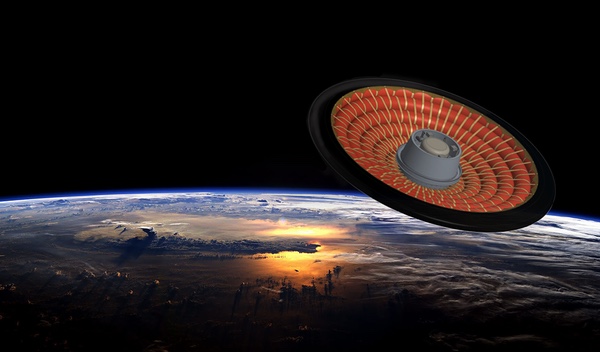 A NASA experiment called LOFTID will test an inflatable heat shield, a technology that could enable heat shields much larger than what can fit inside rockets today. (credit: NASA)
A NASA experiment called LOFTID will test an inflatable heat shield, a technology that could enable heat shields much larger than what can fit inside rockets today. (credit: NASA)Last year was historic for Mars exploration. While humans have been exploring the planet in some capacity for 50 years, 2021 marked several firsts in space exploration, including the first time probes from three countries arrived at the Red Planet.
Progress is partially due to the convergence of many exciting trends that are helping to advance space innovations within the sector. Startups have flocked to the space industry to bring sophisticated technologies like quantum computing, phased array radar, artificial intelligence, cubesats, and other services. Along with NASA, the NewSpace sector is working to transform innovations that can help us reach and settle Mars.
https://www.thespacereview.com/article/4370/1A second chance at the Moonby Jeff Foust Monday, April 18, 2022
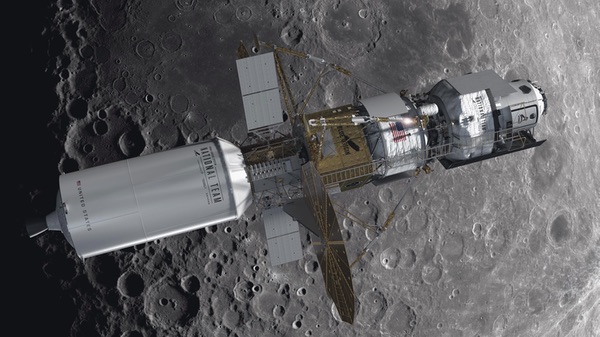 In the original HLS competition, a “National Team” led by Blue Origin proposed a lunar lander. The new competition may feature both a different design for the lander and different partners for Blue Origin. (credit: Blue Origin)
In the original HLS competition, a “National Team” led by Blue Origin proposed a lunar lander. The new competition may feature both a different design for the lander and different partners for Blue Origin. (credit: Blue Origin)Companies rarely get second chances at competitions they lose. Unless a contract is overturned by a protest or other legal action, bidders who lose out on government contracts have to lick their wounds and try again on a future program.
But for the companies that lost out in the Human Landing System (HLS) competition to SpaceX last year, an effort that prompted both unsuccessful protests with the Government Accountability Office and a lawsuit rejected in federal court, there will be a second chance to offer landers capable of taking astronauts to and from the lunar surface. That second chance, though, doesn’t mean a repeat of the same teams offering the same landers.
https://www.thespacereview.com/article/4371/14/ IV 2022Review: The End of Astronautsby Jeff Foust Monday, April 25, 2022
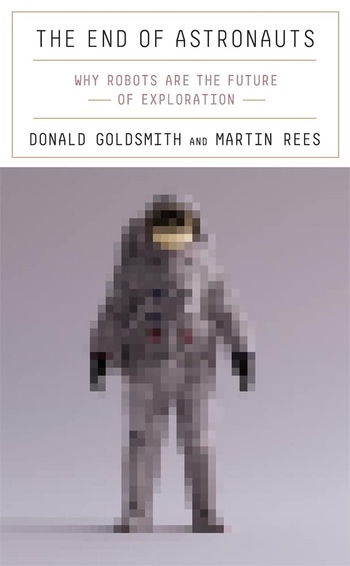 The End of Astronauts: Why Robots Are the Future of Exploration
The End of Astronauts: Why Robots Are the Future of Explorationby Donald Goldsmith and Martin Rees
Belknap Press, 2022
hardcover, 192 pp., illus.
ISBN 978-0-674-25772-6
US$25.95
https://www.thespacereview.com/article/4372/1Last week, a committee of the National Academies released the decadal survey for planetary science and astrobiology, the once-per-decade report outlining priorities for planetary science missions for NASA to pursue. The latest report recommended NASA continue its Mars Sample Return campaign and also two new flagship missions, one to the planet Uranus and another to orbit and land on Saturn’s moon Enceladus, which has a subsurface ocean that is potentially habitable.
https://www.thespacereview.com/article/4372/1Space blocs: The future of international cooperation in space is splitting along lines of power on Earthby Svetla Ben-Itzhak Monday, April 25, 2022
 Representatives of the governments of Singapore and the United States, including NASA deputy administrator Pam Melroy (second from right) at a ceremony March 28 where Singapore signed the Artemis Accords, becoming the 18th nation to join. (credit: Ministry of Communications and Information, Singapore)
Representatives of the governments of Singapore and the United States, including NASA deputy administrator Pam Melroy (second from right) at a ceremony March 28 where Singapore signed the Artemis Accords, becoming the 18th nation to join. (credit: Ministry of Communications and Information, Singapore)Even during times of conflict on the ground, space has historically been an arena of collaboration among nations. But trends in the past decade suggest that the nature of cooperation in space is shifting, and fallout from Russia’s invasion of Ukraine has highlighted these changes.
https://www.thespacereview.com/article/4373/1A small ban of ASATs, a giant leap for space security?by Jeff Foust Monday, April 25, 2022
 Vice President Kamala Harris announced the ban on ASAT testing in an April 18 speech at Vandenberg Space Force Base. (credit: US Space Force photo by Michael Peterson)
Vice President Kamala Harris announced the ban on ASAT testing in an April 18 speech at Vandenberg Space Force Base. (credit: US Space Force photo by Michael Peterson)When the office of Vice President Kamala Harris announced earlier this month she would visit Vandenberg Space Force Base in California and given remarks there, it appeared at first to be a routine visit, an opportunity to visit the base while in her home state. It might also be a reminder of her role as chair of the National Space Council, which has kept a low profile in the current administration since a public meeting in early December (see “A Biden space policy takes shape”, The Space Review, December 6, 2021).
https://www.thespacereview.com/article/4374/1War at sea, seen from aboveby Dwayne Day Monday, April 25, 2022
 Photo of the guided missile cruiser Moskva burning, taken by a sailor on one of the vessels that went to its assistance. The cruiser was struck amidships by two Neptune missiles and was still burning the next day. A fire boat is behind the Moskva spraying water. The ship's life rafts are missing.
Photo of the guided missile cruiser Moskva burning, taken by a sailor on one of the vessels that went to its assistance. The cruiser was struck amidships by two Neptune missiles and was still burning the next day. A fire boat is behind the Moskva spraying water. The ship's life rafts are missing.Less than two weeks ago, the world was stunned when a Russian warship, the guided missile cruiser Moskva, was struck by two Ukrainian missiles and sent to the bottom of the Black Sea—the largest warship sunk in combat since World War II. For some, it evoked memories of an event almost exactly 40 years earlier, when an Argentine cruiser was sunk by a British submarine. That conflict had a space component that is only slowly—very slowly—being revealed. It poses an interesting contrast to how much has changed when it comes to space assets and war at sea.
https://www.thespacereview.com/article/4375/1